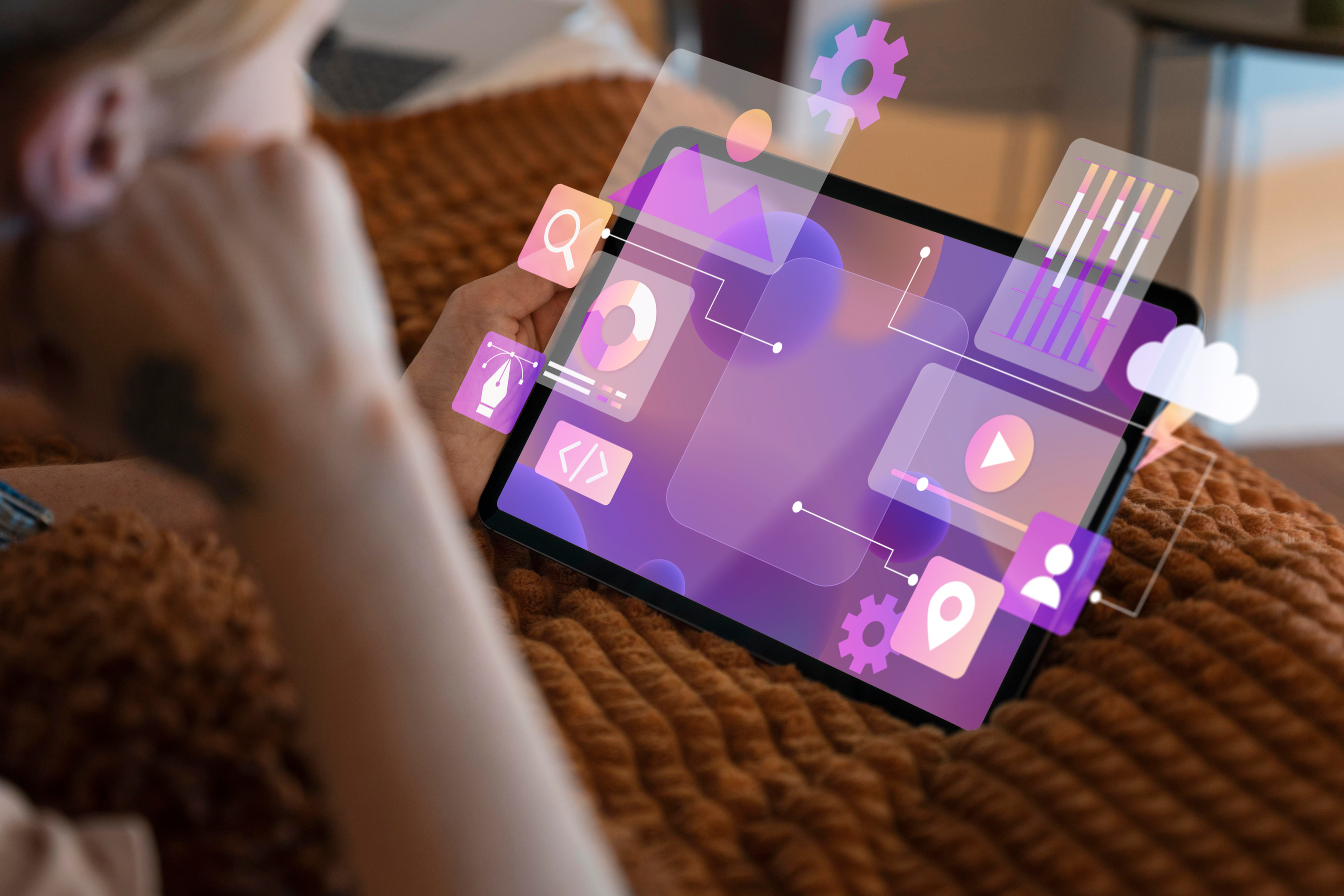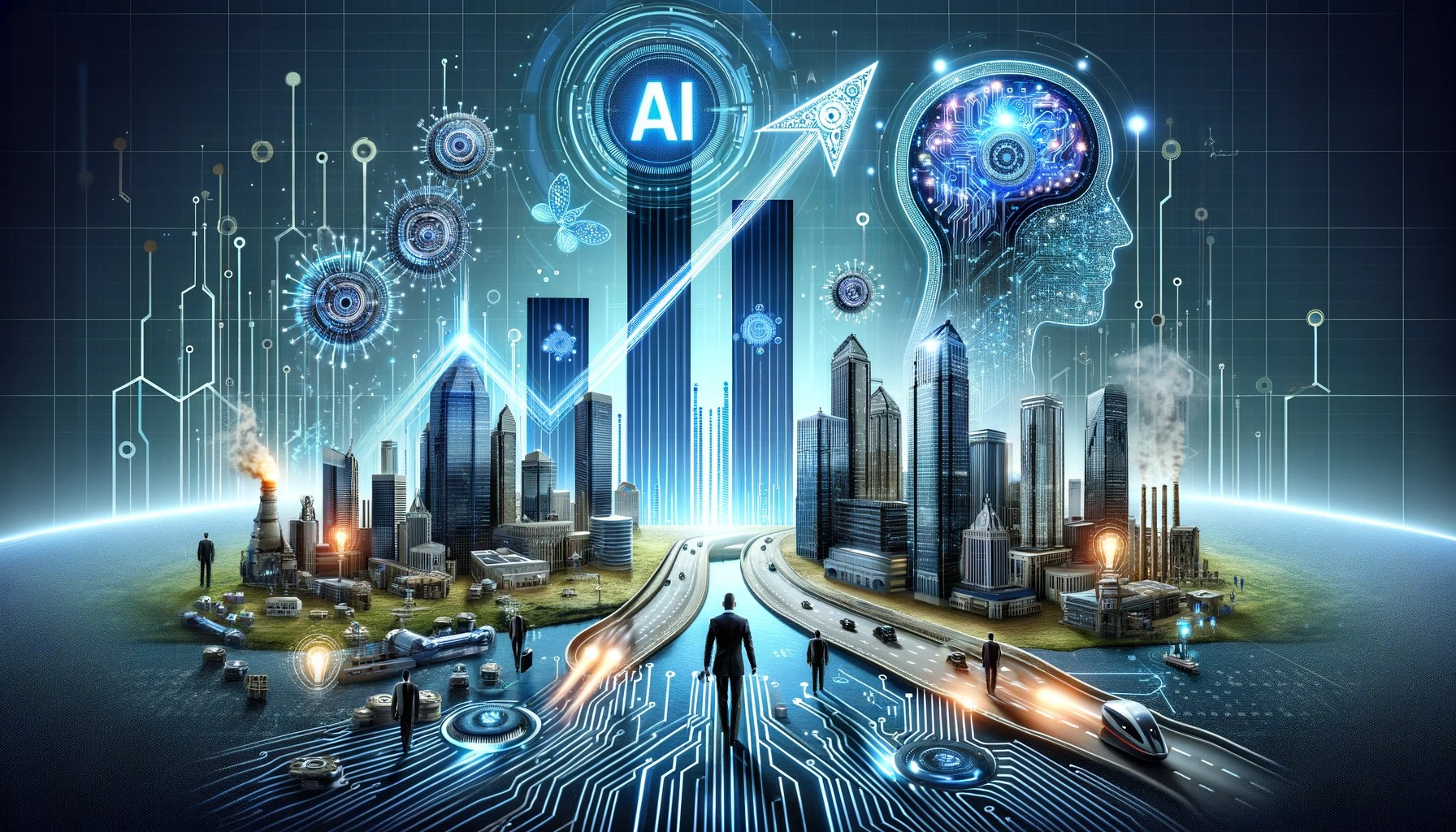
In today's fast-paced business environment, productivity is the golden key to success. Companies and professionals constantly seek tools and technologies to streamline operations, enhance efficiency, and boost productivity.
One such groundbreaking tool is ChatGPT, which OpenAI developed. This comprehensive guide dives into how ChatGPT, a generative AI, is revolutionizing how we work and why it's becoming an indispensable asset for a wide range of professionals, from human resource professionals to software developers, grant writers, and data analysts.
What is OpenAI ChatGPT, and how do you use it?
OpenAI's ChatGPT is a sophisticated artificial intelligence model designed to understand and generate text that mimics human conversation. It's built on the GPT (Generative Pre-trained Transformer) framework, enabling it to perform various natural language processing tasks, such as answering questions, writing tasks, and even coding, based on the prompts it receives.
To use ChatGPT, you provide a text prompt through a platform that offers access to the model, such as OpenAI's website or other applications integrated with OpenAI's API. ChatGPT processes this prompt and generates a response that aligns with the context and content of your request. This interaction can range from obtaining information on specific topics and getting help with creative writing to technical support like debugging software.
The key to maximizing ChatGPT's effectiveness is crafting clear, detailed prompts and engaging in an iterative process to refine the responses.
How Can ChatGPT Improve Productivity?

For Human Resource Professionals
ChatGPT offers a range of functionalities for human resources to streamline HR tasks and enhance productivity. Here's how:
Automating Responses to Common Inquiries
ChatGPT can handle routine queries from employees or job applicants, providing immediate, accurate answers about company policies, benefits, and job requirements. It reduces the time HR staff spend on repetitive questions.
Streamlining the Recruitment Process
Resume Screening: ChatGPT can assist in the initial screening of resumes by identifying essential skills and qualifications, helping to shortlist candidates more efficiently.
Interview Scheduling: It can automate the scheduling of interviews by coordinating with candidates and hiring managers to find suitable times, reducing administrative overhead.
Candidate Engagement: Throughout the recruitment process, ChatGPT can keep candidates engaged with timely communications, updates on their application status, and answers to their questions, enhancing the candidate experience.
Onboarding and Training
ChatGPT can support the onboarding process by providing new hires with personalized information packets, guides on company culture, and answers to their onboarding questions. It can also assist in training by offering interactive Q&A sessions and quizzes.
Employee Engagement and Feedback
HR professionals can use ChatGPT to conduct surveys, collect feedback, and engage with employees. It can help understand employee sentiment, identify improvement areas, and foster a positive work environment.
Policy and Compliance Assistance
ChatGPT can be programmed with up-to-date information on labor laws, company policies, and compliance requirements, offering quick access to important information and ensuring that HR practices adhere to legal standards.
For Content Creators and Writers
For content creators and writers, ChatGPT offers a range of tools to boost productivity by assisting with various stages of the content creation. Here's a brief overview:
Idea Generation: ChatGPT can help overcome writer's block by generating ideas, topics, and headlines, providing a starting point for creative projects.
Drafting Content: It can produce initial drafts for articles, blog posts, scripts, and more, saving time in the early stages of writing.
Editing and Proofreading: While not a replacement for professional editing tools, ChatGPT can suggest improvements in grammar, style, and structure to refine drafts.
Research Assistance: ChatGPT can quickly gather background information, summarize complex topics, and suggest references, streamlining the research process.
Personalization: It aids in tailoring content to the target audience by suggesting tone, style, and language adjustments to engage the target readers better.
Creative Writing: For those involved in creative writing, ChatGPT can help develop plot lines, characters, and dialogues, enriching storytelling with fresh perspectives.
By leveraging ChatGPT, content creators and writers can enhance their efficiency, allowing more focus on their work's creative and critical aspects.
For Software Developers
ChatGPT is a versatile tool for software developers that enhances productivity by streamlining coding tasks, offering debugging assistance, and facilitating knowledge sharing. Here's a brief overview of its benefits:
Coding Assistance
ChatGPT can generate code snippets in various programming languages based on the developer's requirements, saving time and effort. Whether writing boilerplate code or implementing complex algorithms, ChatGPT provides quick solutions developers can refine and integrate into their projects.
Debugging and Problem Solving
ChatGPT helps identify errors in code and suggests corrections, making the debugging process faster and more efficient. It can explain why specific bugs occur and offer alternative solutions, aiding developers in enhancing their problem-solving skills.
Knowledge Sharing and Collaboration
ChatGPT is a knowledge base that explains programming concepts, frameworks, and technologies. It facilitates knowledge sharing among team members, especially in collaborative projects, by providing insights and clarifications on complex topics.
Documentation and Commenting
Generating documentation and comments for code can be time-consuming. ChatGPT assists in creating comprehensive documentation and meaningful comments, improving code readability and maintainability.
Learning and Skill Development
Developers can use ChatGPT to stay updated with the latest programming trends, learn new languages, and understand advanced concepts. It is an on-demand tutor, providing personalized learning experiences based on the developer's current knowledge level and interests.
For Data Analysts
ChatGPT can significantly enhance productivity for data analysts by assisting in various aspects of data analysis and reporting. Here's a brief overview:
Data Cleaning and Preprocessing: While ChatGPT doesn't directly manipulate data, it can guide approaches and scripts for cleaning and preprocessing data, making it ready for analysis.
Query Generation: ChatGPT can help generate queries for databases, aiding analysts in extracting the necessary data without having to write complex SQL queries from scratch manually.
Analysis Insights: It can offer suggestions on analytical methods and techniques suitable for different data sets, helping analysts choose the most effective approach for their analysis.
Report Drafting: ChatGPT can assist in drafting preliminary reports, summarizing findings, and even suggesting conclusions based on the analysis, streamlining the reporting process.
Visualization Suggestions: Although not a visualization tool, ChatGPT can propose ideas for effectively visualizing data, guiding analysts on which types of charts or graphs might best represent their findings.
Learning and Development: Data analysts can use ChatGPT to stay updated on the latest data analysis tools, techniques, and best practices, facilitating continuous learning and improvement in their field.
Incorporating ChatGPT into their workflow allows data analysts to focus more on extracting insights and less on the routine aspects of data analysis, thereby increasing their overall productivity.
Is It a Good Idea to Use ChatGPT at Work?
Incorporating ChatGPT into the workplace can lead to a significant productivity improvement. A research study comparing workers exposed to AI tools like ChatGPT against a control group found increased productivity among the former. This increase was attributed to ChatGPT's ability to complete specific tasks more efficiently, allowing workers to allocate their effort to more critical areas of their jobs.
However, it's essential to consider the nature of the task and the required output quality. Combining ChatGPT's capabilities with human oversight can yield the best results for tasks where personalized input and human creativity are paramount.
The Future of Productivity with AI and ChatGPT

The future of productivity with AI, particularly with tools like ChatGPT, points towards a more efficient, creative, and informed workplace. AI and ChatGPT are set to revolutionize tasks by automating routine processes, providing insightful data analysis, and enabling more personalized customer interactions. It speeds up workflows and frees human workers to focus on complex, strategic, and creative tasks that AI cannot replicate.
Moreover, as AI technology evolves, we can expect ChatGPT and similar tools to become even more integrated into daily work, offering more nuanced and context-aware assistance. It will likely lead to innovations in how businesses operate, decisions are made, and products and services are developed and delivered.
Conclusion
ChatGPT represents a significant leap forward in using artificial intelligence to increase productivity. By automating routine tasks, enhancing the creative process, and providing support for complex analytical tasks, ChatGPT is not just a tool but a partner in achieving business and professional goals.
As we continue to explore and understand the capabilities of this AI technology, its potential to revolutionize industries and redefine productivity standards becomes increasingly clear. Whether for writing, research, data analysis, or software development, ChatGPT offers a glimpse into the future of work, where AI tools and human professionals collaborate to achieve more than ever.
Stay updated on AI advancements with Prompt Engineering Daily! Subscribe for the latest news and insights.
FAQs
Can ChatGPT assist in data analysis and future research tasks?
ChatGPT can also analyze data with the help of plugins for data analysis. While ChatGPT's base functionality offers remarkable language processing capabilities, ChatGPT Plus elevates its data analysis potential by introducing the beta feature, Advanced Data Analysis, and a range of powerful plugins.
How can ChatGPT assist in project management?
ChatGPT can assist in project management by generating project plans, tracking progress reports, reminding team members of deadlines and tasks, and helping keep projects on schedule and under budget.
Will ChatGPT replace project managers?
Projects need human oversight. Even if ChatGPT collects all the data, you still need someone to review it for accuracy and decide how to use it. While AI can do a lot, it cannot replace your skills as a manager and overseer. It can assist you in those efforts, but your input and engagement are still required.
